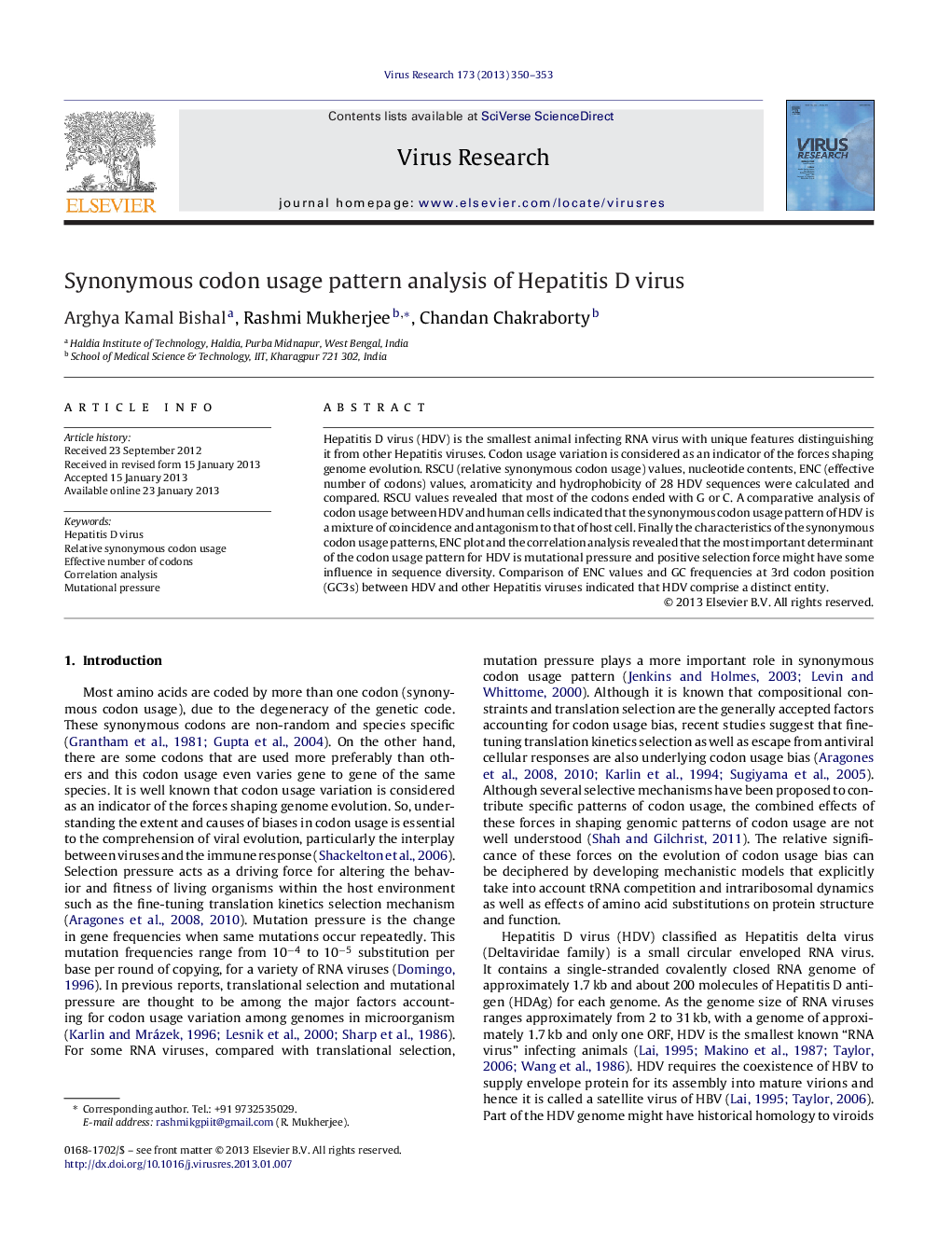| Article ID | Journal | Published Year | Pages | File Type |
|---|---|---|---|---|
| 3428694 | Virus Research | 2013 | 4 Pages |
Hepatitis D virus (HDV) is the smallest animal infecting RNA virus with unique features distinguishing it from other Hepatitis viruses. Codon usage variation is considered as an indicator of the forces shaping genome evolution. RSCU (relative synonymous codon usage) values, nucleotide contents, ENC (effective number of codons) values, aromaticity and hydrophobicity of 28 HDV sequences were calculated and compared. RSCU values revealed that most of the codons ended with G or C. A comparative analysis of codon usage between HDV and human cells indicated that the synonymous codon usage pattern of HDV is a mixture of coincidence and antagonism to that of host cell. Finally the characteristics of the synonymous codon usage patterns, ENC plot and the correlation analysis revealed that the most important determinant of the codon usage pattern for HDV is mutational pressure and positive selection force might have some influence in sequence diversity. Comparison of ENC values and GC frequencies at 3rd codon position (GC3s) between HDV and other Hepatitis viruses indicated that HDV comprise a distinct entity.
► RSCU values, nucleotide contents, ENC values, aromaticity and hydrophobicity of 28 HDV viruses were calculated and compared. ► Comparison of synonymous codon usage between HDV and human cell indicates that its usage pattern is based on coincidence and antagonism to host cell. ► Analysis revealed that the most important determinant of the codon usage pattern for HDV is mutational pressure.
